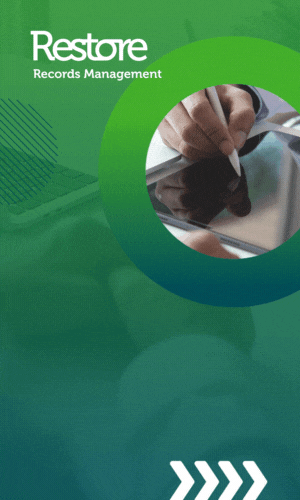By Dr Vijay Magon, Managing Director of CCube Solutions
From 2009, St Helens and Knowsley Teaching Hospitals NHS Trust stopped using paper medical records in clinical practice after migrating to an electronic document and records management system (EDRMS), to coincide with the opening of two hospitals at Whiston and St Helens.
The EDRMS meant the trust stopped hand delivering 7,000 paper files to outpatient departments each week and then filing them in reverse. Its records library subsequently closed; a building containing over one million folders, each holding – on average – 250 pages. The EDRMS software and scan-on-demand approach cost £1.2 million with annual savings of £1.4 million realised, as storage and transportation costs were cut and staff redeployed.
The upshot? By going digital, the new IT system paid for itself within a year and a vast amount of money has been saved ever since. The trust could guarantee the right medical records for the right patient were available, to the right doctor, at the right time. This has reduced elective care appointment cancellations because notes were lacking, improved clinical productivity as more patients are seen, and enhanced patient safety and overall clinical care.
However, to the focus of this article: the UK Government’s recent Budget Statement where Rishi Sunak announced an extra £2.1 billion – as part of a £5.9 billion total – to improve technology and data in the NHS; so-called digital transformation.
Clearly this is a broad area. To just focus on patient records for a moment, too many trusts are still far too paper-based. According to our own Freedom of Information requests, this is significant with 50 per cent of the 233 trusts in the country yet to transition to computer-based systems for records management.
It begs the question, what should be done with the new funds to ensure best return on investment?
A number of key imperatives should be considered to ensure the new cash is well spent – here’s my top 10 focus areas listed below:
- Digital transformation is a loose term which requires clearer definition about what it actually involves, given it means many things to different people. The scope must be made more specific, namely: which areas of technology, the costs and the expected benefits.
- Spending should be allocated to tackle obvious problem areas first to provide quick wins. Patient records is one obvious example.
- Innovation should be championed and promoted with trusts free to make their own decisions about the IT systems they want based on local requirements.
- Systems deployed must abide to uniform data standards enforced by the Department of Health and Social Care (DHSC). This means System A from Supplier 1 can talk to System B from supplier 2 and so on. HL7-FHIR is just one example for exchanging healthcare information electronically, along with SNOMED CT, which contains all the clinical terms required to document procedures, symptoms, clinical measurements, diagnoses, medications and so on. It gives IT systems a shared language that everyone can use.
- IT interoperability, therefore, must be at the heart of any future national NHS IT investment – and to repeat the point again – enforced fastidiously by the DHSC with suppliers penalised if they act in commercial self-interest. There is too much of this going on already, with the NHS likely to be held to ransom in the long term with costly fees and propriety ‘lock in’. Incumbent clinical IT vendors must be managed closely so they do not act in monopolistic ways, preventing other suppliers – who could offer additional functionality that adds value – being integrated easily. APIs are a very good example of this. All suppliers say in their NHS bidding questionnaires that they have open APIs. The reality is that some then make it difficult for other firms to use them or want to charge for access – in effect double charging the NHS. Once trusts have purchased software licenses, APIs need to be free so integration is simplified and ‘air gaps’ between systems are avoided.
- Government must not be seduced by big or trendy technology firms who appear to offer ‘the’ perfect solution. It doesn’t exist. Competition is key and must be encouraged. And competition comes from all sizes of firms.
- The convoluted and complex NHS procurement process, which negatively effects SMEs, needs to be simplified. Once a firm is authorised on an appropriate framework, they should be free to bid on technical merit rather than wasting time on onerous form filling, which impacts smaller firms disproportionately harder than larger companies.
- Care should be taken to ensure the ‘right’ technology is used for specific purposes, rather than systems ‘stretched’ to do things outside their main scope. For example, clinical EPR systems used in both primary and secondary are perfect for holding structured clinical data. They’re not designed to hold large volumes of unstructured information from scanned legacy patient records which requires lifecycle management rules to be applied to the data contained.
- The application of any technology should address specific problems and whatever solution is installed must be expandable over time so that ‘roadblocks’ in the future are avoided. Trusts that fail to do this to a reasonable level of detail are likely to suffer from difficulties over time.
- IT departments must engage and work closely with their end-user community about system selection, given it is clinical practitioners who use the technology day to day. It cannot be an ‘us’ doing it to ‘them’ approach.
For further information, visit www.ccubesolutions.com or email info@ccubesolutions.com





